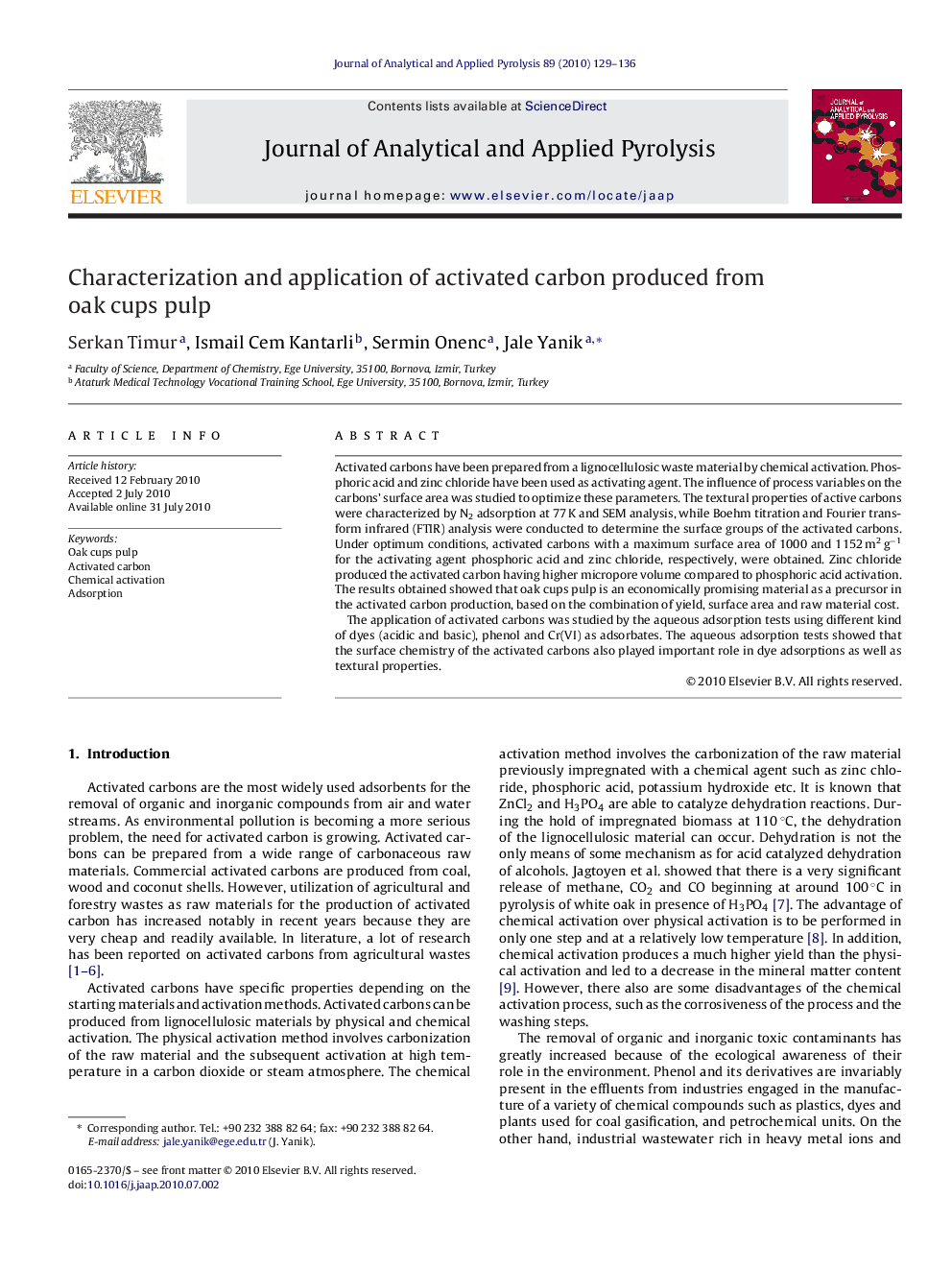| Article ID | Journal | Published Year | Pages | File Type |
|---|---|---|---|---|
| 1197065 | Journal of Analytical and Applied Pyrolysis | 2010 | 8 Pages |
Activated carbons have been prepared from a lignocellulosic waste material by chemical activation. Phosphoric acid and zinc chloride have been used as activating agent. The influence of process variables on the carbons’ surface area was studied to optimize these parameters. The textural properties of active carbons were characterized by N2 adsorption at 77 K and SEM analysis, while Boehm titration and Fourier transform infrared (FTIR) analysis were conducted to determine the surface groups of the activated carbons. Under optimum conditions, activated carbons with a maximum surface area of 1000 and 1152 m2 g−1 for the activating agent phosphoric acid and zinc chloride, respectively, were obtained. Zinc chloride produced the activated carbon having higher micropore volume compared to phosphoric acid activation. The results obtained showed that oak cups pulp is an economically promising material as a precursor in the activated carbon production, based on the combination of yield, surface area and raw material cost.The application of activated carbons was studied by the aqueous adsorption tests using different kind of dyes (acidic and basic), phenol and Cr(VI) as adsorbates. The aqueous adsorption tests showed that the surface chemistry of the activated carbons also played important role in dye adsorptions as well as textural properties.
